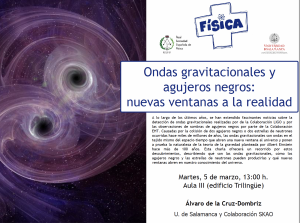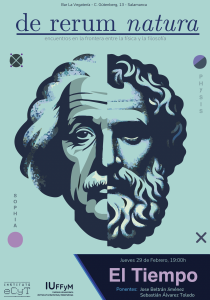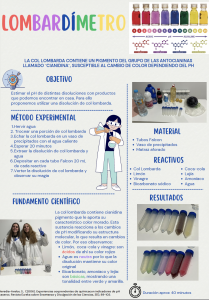Mas información: https://sites.google.com/usal.es/iiicongresoods-mupes?usp=sharing&pli=1![]()
![]()
 Os anunciamos la próxima sesión de +Física, así como del calendario de charlas de este segundo semestre
Os anunciamos la próxima sesión de +Física, así como del calendario de charlas de este segundo semestre

Con motivo de la celebración de la entrega de premios de la Fase Local de la XXXV Olimpiada de Física en Salamanca, y aprovechando que tenemos en la Facultad de Ciencias la exposición sobre Einstein, el profesor de la Universidad de Salamanca, Marc Mars impartirá la conferencia “Gravitación y relatividad: la revolución Einsteniana“.
¡Os esperamos!
La Fase Local de la XXXV Olimpiada Española de Física, se celebrará el próximo viernes 16 de febrero de 2024.
La prueba comenzará a las 16:30 h, tendrá una duración aproximada de 3 horas. https://slsalamancarsef.usal.es/Fase-Local-2024
Importante: para formalizar la inscripción el profesor responsable debe rellenar el siguiente formulario de Google* antes del martes 13 de febrero:
https://forms.gle/EJqnrgPXUmVKKndw7
*completar un formulario por cada alumno
El regalo para el ganador de este año de nuevo es un Apple iPad – ¡Animarles a participar!
Ahora puedes generar tú mismo las imágenes o fotos que necesitas con #inteligenciaartificial
Existen muchas opciones, una de ellas es #ideogram que además tiene la opción de integrar texto.
https://ideogram.ai/t/trending
Hay que registrarse, y puedes generar varias imágenes (hasta 100) en un mismo día.

Podéis ver en este enlace uno de los experimentos que han realizado los alumnos de Didáctica en la Especialidad de Física y Química en la Universidad de Salamanca.
En este caso, se trata de estimar el pH de distintas disoluciones con productos que podemos encontrar en casa. Para ello proponemos utilizar una disolución de col lombarda.
¡Enhorabuena a Irene y Sofía!
Desde el Proyecto Europeo GIRLS estamos realizando una serie de vídeos para dar a conocer los Objetivos de Desarrollo Sostenible (ODS).
María López, estudiante de 4º curso del Grado en Física en la Universidad de Salamanca, nos explica como lograr el ODS 7: Energía Asequible y Limpia:


